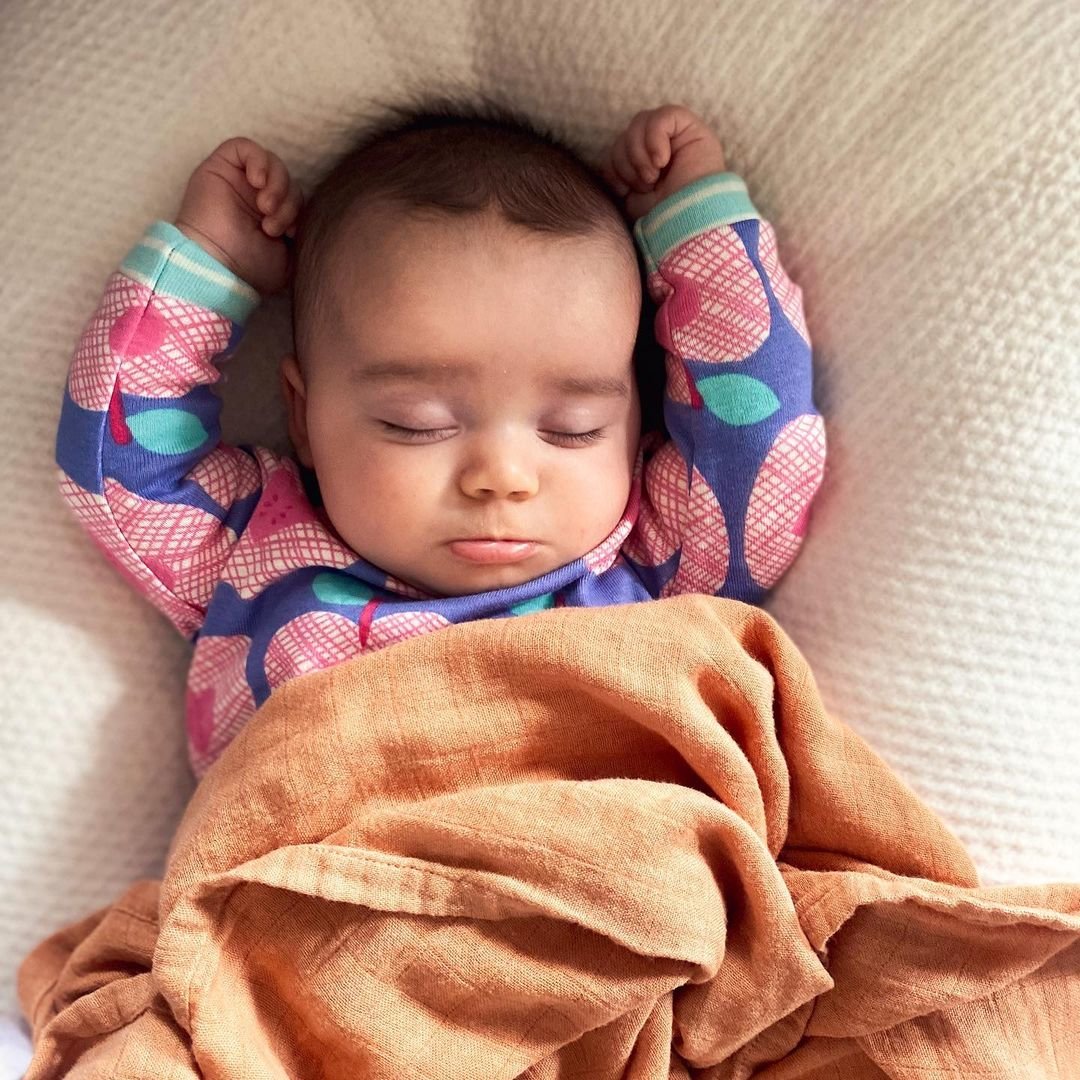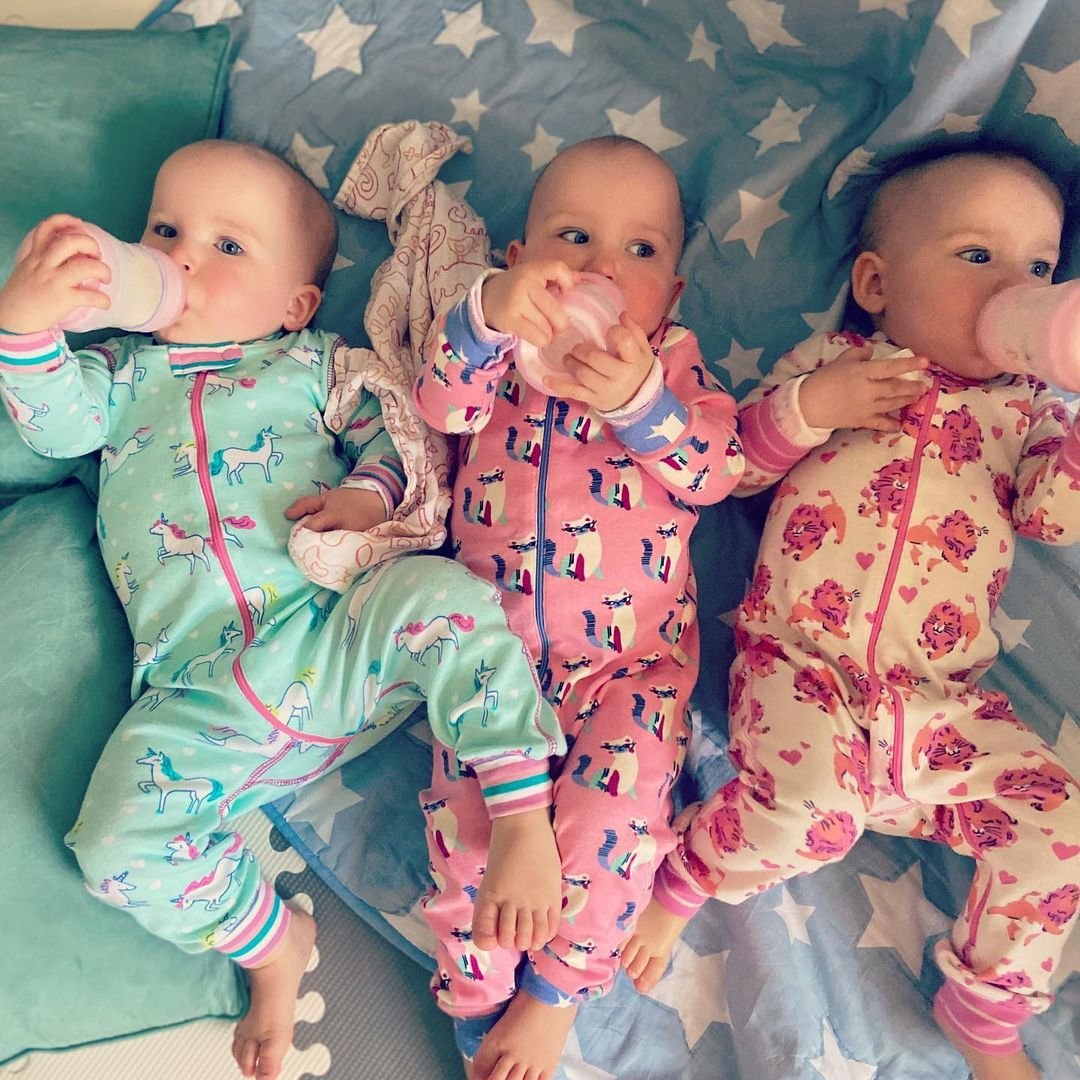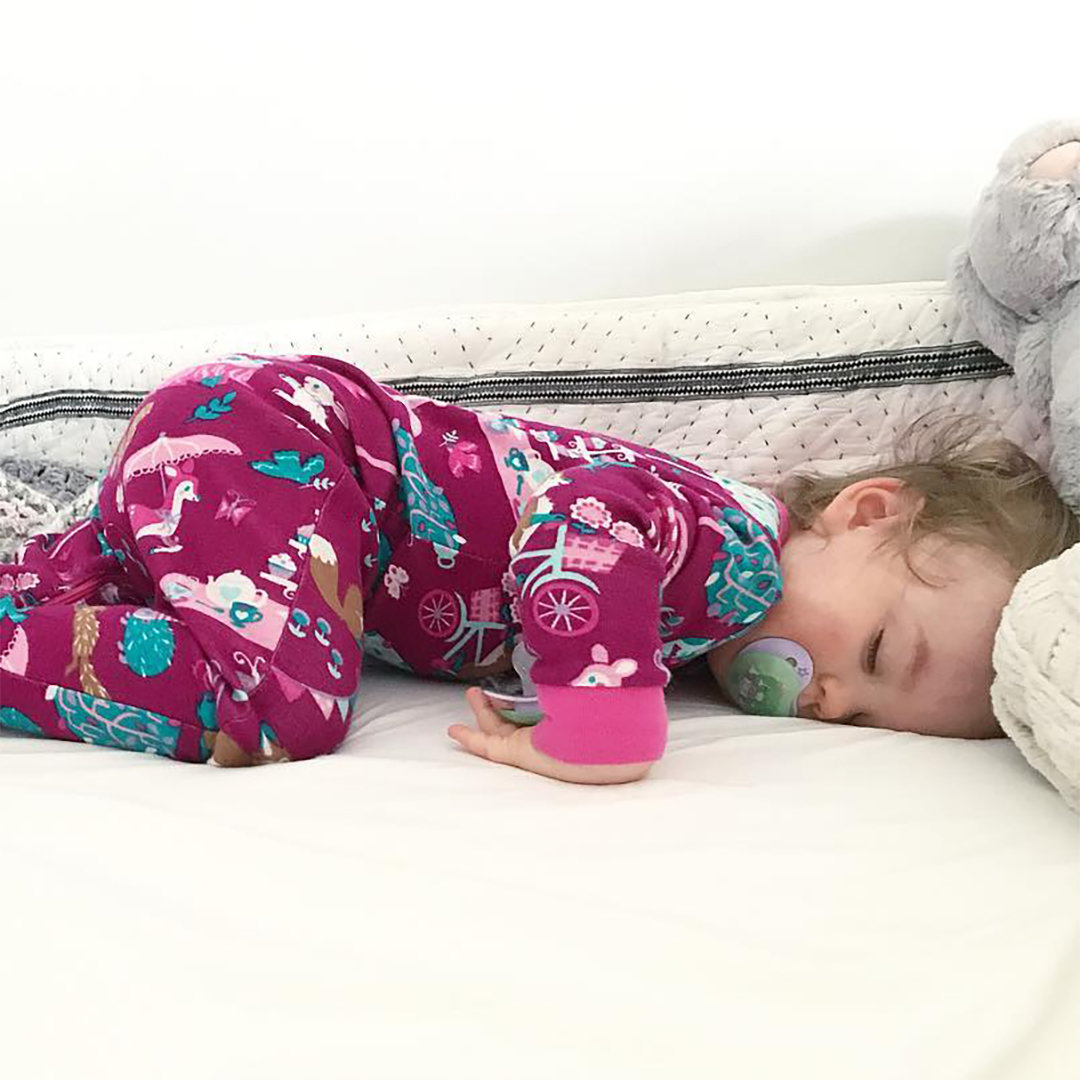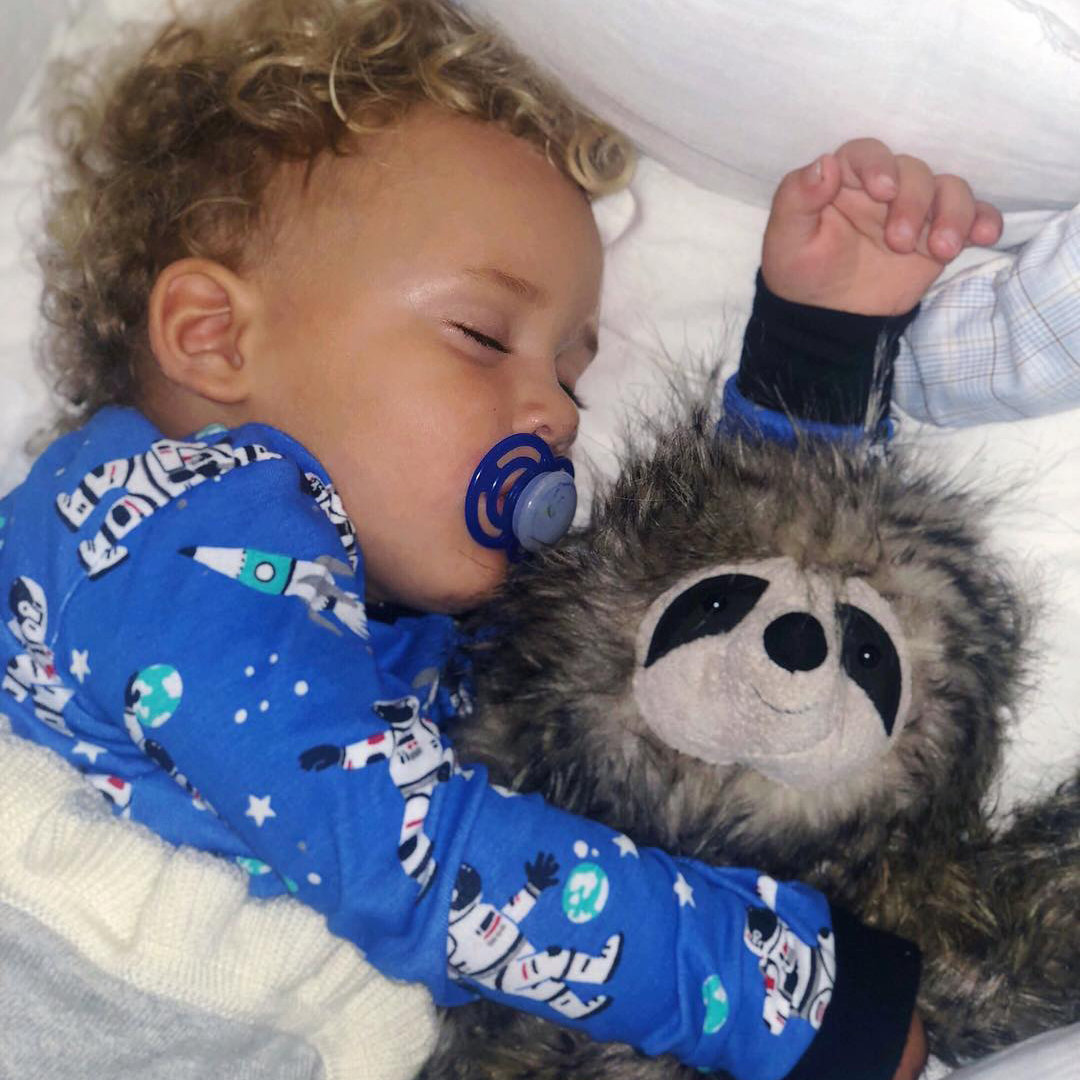The Village - A perfectly sleep conducive envrionment

LEARN — SLEEP TRAINING PART 1
A Perfectly Sleep-Conducive Environment
by Rosalee Lahaie Hera
Whether you've got a night owl newborn, all-night-party toddler, or wide-eyed school aged kiddo, at some point you may have wondered (quietly or aloud!) why sleep feels so hard.
The thing is: it doesn’t have to feel that way.
There is a proven, science-backed framework that works for any (non-medical) sleep issue you’re tackling with your kiddos.
There are four magical keys to great sleep: a perfectly sleep-conducive environment, an age-appropriate sleep schedule, a consistent bedtime and nap time routine, and sleep independence.
The very first place to look for sleep improvements is inside your child’s sleep environment.
After 8 weeks of age, all human beings sleep best in cave-like conditions for both nighttime and daytime sleep. A pitch-black room allows humans to adequately and consistently produce an important sleep hormone called melatonin. Many sleep issues, from night wakings to early morning wakings to short naps, are improved by darkening the room environment.
"While it’s not possible for babies to be afraid of the dark, it can happen as your kiddos grow. If your older kiddos express fear of the dark, you can add a warm (red hue) nightlight inside the room to help provide reassurance while also avoiding messing with melatonin."
While they are a good place to start, blackout blinds and curtains are often not enough to block out beams of light coming into your kiddo’s sleep environment. You may need to add blackout tape or other products that can be placed flush against the window to ensure these beams of light are covered. A stack of towels at the bottom of bedroom doors can help to eliminate any extra light streaming in from the hallway. In addition, blackout or other tape can help to cover any electronic lights inside the room.
While it’s not possible for babies to be afraid of the dark, it can happen as your kiddos grow. If your older kiddos express fear of the dark, you can add a warm (red hue) nightlight inside the room to help provide reassurance while also avoiding messing with melatonin.
The room should be on the cooler side for good sleep (20-21 Celsius, or 68-70 Fahrenheit). Whether you’ve got a wee or big one, you’ll want to avoid overheating them. Use no more than two layers of cotton clothing and for older kiddos in a bed, avoid using heavy bed coverings. Keep in mind that hands, feet and faces will always feel cold in this environment. This is okay because these are not good indicators of core body temperature. If you are ever concerned that your child is too cold, check their belly in the morning. If it is warm (not sweaty), they are warm enough.
Consider adding continuous white or pink (a deeper sound like the sound of the ocean) noise. Continuous noise is remarkable; it helps block out background noises, but more importantly, it helps your little one seamlessly connect their sleep-wake cycles. Sleep-wake cycles are set patterns of deep and light sleep, and typically end during a period of very light sleep. However, if your child falls asleep listening to white or pink noise and then later stirs through this very light period of sleep and hears the same sound, they are much more likely to fall right back to sleep. This means that they’re more likely to sleep for longer periods of time overnight and during naps.
Once you’ve ensured a perfectly sleep-conducive environment,you can move on to ensuring your little one’s sleep schedule is in good shape.
Rosalee Lahaie Hera is a Certified Pediatric & Newborn Sleep Consultant, a Certified Potty Training Consultant, and the founder of Baby Sleep Love. She’s also a mom to two beautiful little humans. Rosalee is a researcher at heart with a background in healthcare management and a passion for sleep science. She takes a highly analytical approach and uses proven, gentle methods to help families (like yours!) get the sleep they need. Rosalee is a big fan of fancy coffee and great food (both cooking it and eating it). You can connect with Rosalee on Facebook or Instagram.
LEARN — SLEEP TRAINING PART 1
A Perfectly Sleep-Conducive Environment
by Rosalee Lahaie Hera
Whether you've got a night owl newborn, all-night-party toddler, or wide-eyed school aged kiddo, at some point you may have wondered (quietly or aloud!) why sleep feels so hard.
The thing is: it doesn’t have to feel that way.
There is a proven, science-backed framework that works for any (non-medical) sleep issue you’re tackling with your kiddos.
There are four magical keys to great sleep: a perfectly sleep-conducive environment, an age-appropriate sleep schedule, a consistent bedtime and nap time routine, and sleep independence.
The very first place to look for sleep improvements is inside your child’s sleep environment.
After 8 weeks of age, all human beings sleep best in cave-like conditions for both nighttime and daytime sleep. A pitch-black room allows humans to adequately and consistently produce an important sleep hormone called melatonin. Many sleep issues, from night wakings to early morning wakings to short naps, are improved by darkening the room environment.
"While it’s not possible for babies to be afraid of the dark, it can happen as your kiddos grow. If your older kiddos express fear of the dark, you can add a warm (red hue) nightlight inside the room to help provide reassurance while also avoiding messing with melatonin."
While they are a good place to start, blackout blinds and curtains are often not enough to block out beams of light coming into your kiddo’s sleep environment. You may need to add blackout tape or other products that can be placed flush against the window to ensure these beams of light are covered. A stack of towels at the bottom of bedroom doors can help to eliminate any extra light streaming in from the hallway. In addition, blackout or other tape can help to cover any electronic lights inside the room.
While it’s not possible for babies to be afraid of the dark, it can happen as your kiddos grow. If your older kiddos express fear of the dark, you can add a warm (red hue) nightlight inside the room to help provide reassurance while also avoiding messing with melatonin.
The room should be on the cooler side for good sleep (20-21 Celsius, or 68-70 Fahrenheit). Whether you’ve got a wee or big one, you’ll want to avoid overheating them. Use no more than two layers of cotton clothing and for older kiddos in a bed, avoid using heavy bed coverings. Keep in mind that hands, feet and faces will always feel cold in this environment. This is okay because these are not good indicators of core body temperature. If you are ever concerned that your child is too cold, check their belly in the morning. If it is warm (not sweaty), they are warm enough.
Consider adding continuous white or pink (a deeper sound like the sound of the ocean) noise. Continuous noise is remarkable; it helps block out background noises, but more importantly, it helps your little one seamlessly connect their sleep-wake cycles. Sleep-wake cycles are set patterns of deep and light sleep, and typically end during a period of very light sleep. However, if your child falls asleep listening to white or pink noise and then later stirs through this very light period of sleep and hears the same sound, they are much more likely to fall right back to sleep. This means that they’re more likely to sleep for longer periods of time overnight and during naps.
Once you’ve ensured a perfectly sleep-conducive environment, you can move on to ensuring your little one’s sleep schedule is in good shape.
Rosalee Lahaie Hera is a Certified Pediatric & Newborn Sleep Consultant, a Certified Potty Training Consultant, and the founder of Baby Sleep Love. She’s also a mom to two beautiful little humans. Rosalee is a researcher at heart with a background in healthcare management and a passion for sleep science. She takes a highly analytical approach and uses proven, gentle methods to help families (like yours!) get the sleep they need. Rosalee is a big fan of fancy coffee and great food (both cooking it and eating it). You can connect with Rosalee on Facebook or Instagram.
#HatleySleep
How do you get the little one to sleep? Share your bedtime routine with us
Join us on instagram


